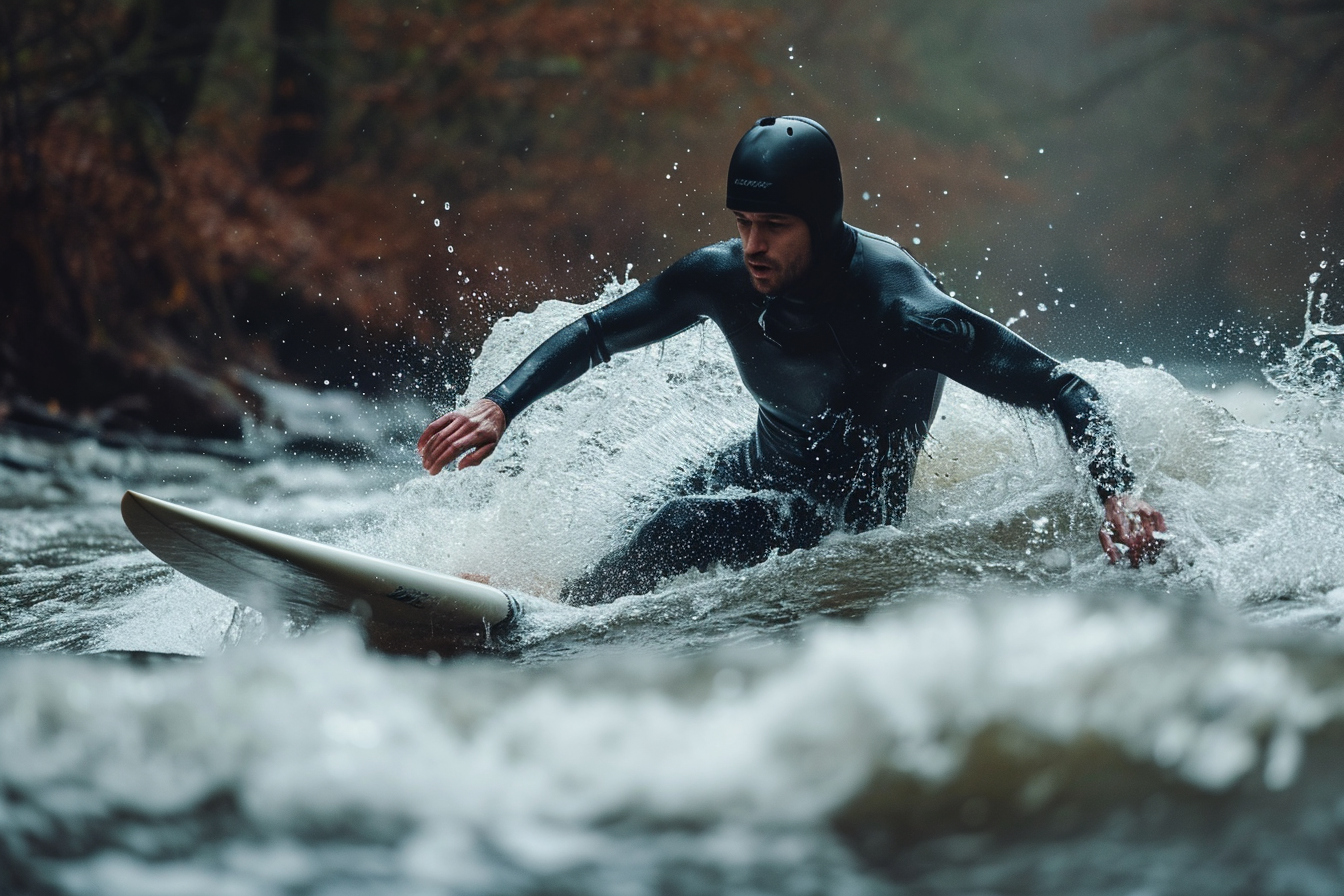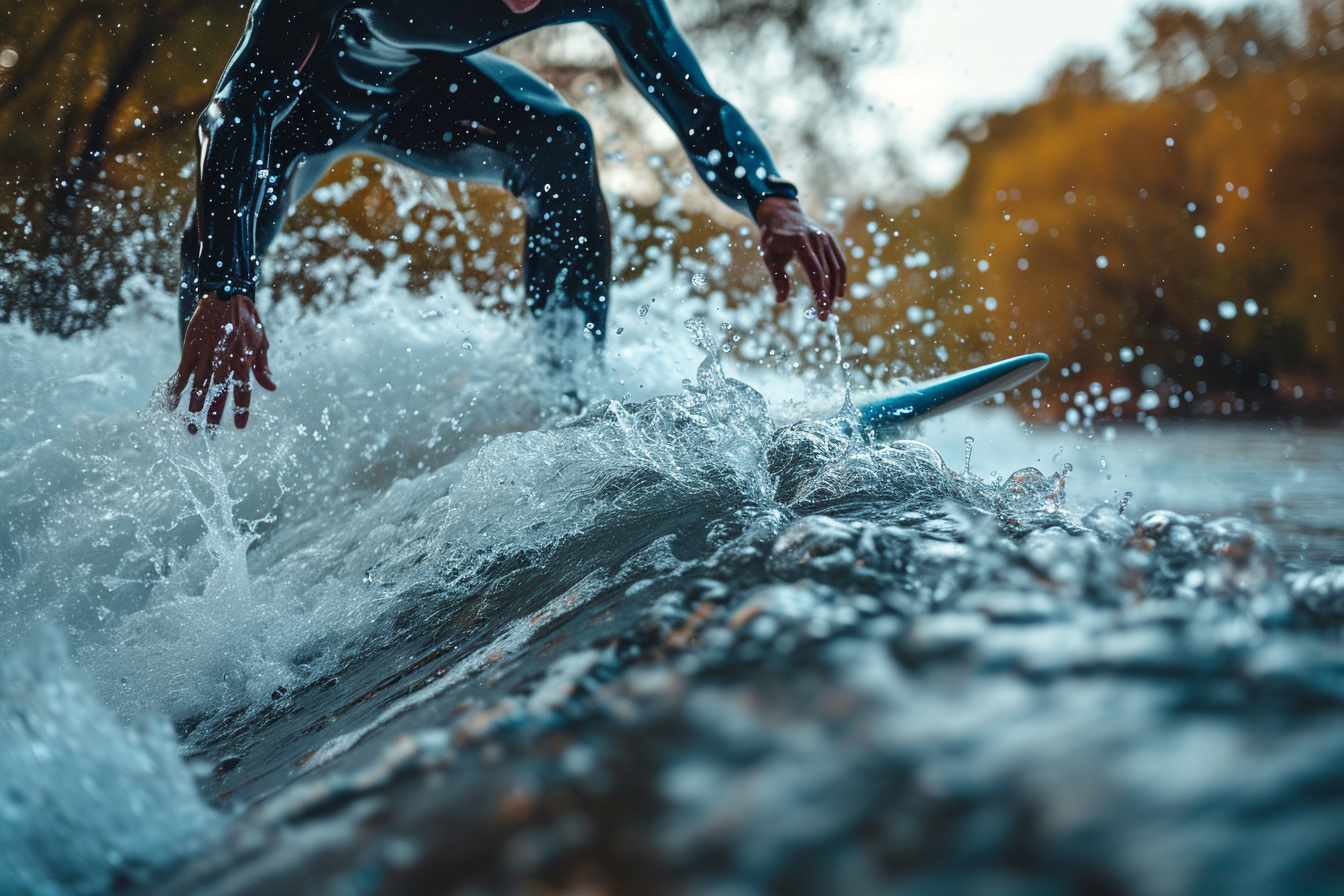
River surfing is an exhilarating sport that combines the skills of traditional surfing with the dynamic flow of a river. Unlike ocean surfing, river surfing involves riding a standing wave formed by the rapid movement of water over rocks or other sub-surface obstacles. This innovative sport embodies both a challenge and an adventure, but it requires knowledge, skill, and respect for the power of nature. As you embark on the journey to becoming a proficient river surfer, understanding the basics and adhering to essential safety measures will ensure a rewarding experience.
Understanding river dynamics
Hydrology and river waves
Before delving into surfing techniques, comprehending river hydrology is crucial. River waves are created by a sudden increase in gradient, causing the water to speed up and flow over obstructions. The shape and power of the wave largely depend on water volume, flow rate, and the contour of the riverbed. Ideal river waves are typically stationary, allowing surfers to ride continuously without moving downstream.
Identifying surfable waves
A surfable river wave is characterized by its "green face," indicative of its energy and smoothness. Beginners should seek out waves that offer a clean, regular shape with sufficient water depth to prevent contact with the riverbed. At secondary importance is the accessibility of the wave. Those that are located closer to riverbanks or within designated river surfing parks are preferable for novices.
Equipment essentials
Surfboards and Gear
The correct equipment is a pivotal factor that affects your river surfing experience. Since river waves are generally smaller and slower than ocean waves, river surfboards tend to be shorter and more buoyant. For starters, a sturdy board with good volume will assist in maintaining stability. Additionally, river conditions can be tough on your equipment, necessitating a board that is durable and agile.
Protective Clothing and Other Must-Haves
Due to varying water temperatures and inherent risks, personal protective equipment cannot be overlooked. Wearing a high-quality wetsuit will provide thermal protection and buoyancy, while helmets and life vests offer protection against impacts and the threat of submersion. Suitable footwear shields your feet from the rocky riverbed.
Safety first
Risk Awareness
River surfing, like any water-based activity, involves inherent risks, such as strong currents, hidden obstacles, and variable water levels. Beginners must develop a deep respect for these dangers through education and preparation. Awareness of local conditions, consultation with experienced surfers, and a solid understanding of one’s own limitations are fundamental steps towards safer surfing.
Emergency Preparedness
Knowing how to respond in case of an accident is one of the keystones of river surfing safety. Make it a priority to familiarize yourself with rescue techniques and have a clear action plan, including the location of emergency exits along the riverbank. Always surf with a companion, as quick assistance can be pivotal in an emergency situation.
Fundamental techniques
Paddling and positioning
Mastering the entry into the wave is the first technique a river surfing beginner should focus on. Paddling into a river wave often involves crossing a current, which requires strength and the correct timing. A balanced and strategic approach to positioning yourself in relation to the wave is also vital.
Edge control and stability
River surfing calls for proficient edge control – the ability to tilt and angle your board to navigate the wave. Acquiring this skill will lead to heightened stability and maneuverability. As you gain more experience, your ability to read and respond to the water’s surface changes will grow, allowing for more dynamic and confident riding.
The pop-up
The pop-up in river surfing follows the same principle as in ocean surfing – a swift and fluid movement from a prone position to standing on your board. However, river surfers must fine-tune this skill to account for the smaller and less powerful wave. Precision and speed are keys to a successful river surfing pop-up.
Building your river surfing skills
Start with small waves
Embarking on your river surfing voyage with smaller waves offers a manageable environment for developing your fundamentals. It enables you to focus on controlling the board and refining your basic movements without being overwhelmed by the wave.
Progressive learning method
River surfing proficiency grows with consistent practice and incremental challenges. As you advance, gradually escalate the size and power of the waves you tackle. This progressive method aids in building confidence and skill in a controlled manner, thus minimizing risk.
Understanding wave etiquette
Knowing and adhering to the unspoken rules of the river will earn you respect and keep you safe. River surfing etiquette includes taking turns, staying out of other surfers’ paths, and being conscious of your impact on the local environment and community.
Consider professional instruction
Investing in lessons from a professional river surfing instructor can significantly accelerate your learning curve. Expert guidance will provide you with tailored advice, immediate feedback, and invaluable insights specific to river surfing, which might otherwise take years to learn on your own.
Advanced techniques and progression

Once the fundamentals are in place, ambitious river surfers may begin to explore more sophisticated techniques that the sport has to offer.
Carving and turns
Carving refers to making directed turns on the face of the wave, which demands precise weight distribution and timing. Mastery of carving leads to the thrilling sensation of dancing with the river’s energy.
Tricks and aerials
For the adventurous heart, river surfing has a plethora of tricks and aerial maneuvers to offer. Successfully executing these moves calls for perfect wave judgment, board control, and an unwavering commitment to practice.
Complementary training and fitness
River surfing is physically demanding, placing importance on robust overall fitness. Engage in complementary training like swimming, strength exercises, and balance workouts to ensure you are physically prepared to face the challenges of the sport.
Swimming proficiency
Strong swimming ability is essential for safety in river surfing. The river’s unpredictable nature demands that surfers be capable of navigating swift currents and staying calm during unexpected plunges.
Strength and conditioning
Building upper body strength is fundamental for effective paddling, while core and leg strength are key for board control, stability, and maneuvering. A dedicated strength and conditioning program will fortify your abilities on the water.
Balance and flexibility training
Surfing requires a dynamic balance and the capacity to adjust rapidly to shifting conditions. Activities like yoga or balance board exercises improve flexibility and balance, directly translating to improved performance on the river.
Community and continuing education
Engaging with the local river surfing community provides not only a network of support but also a wealth of collective wisdom. Experienced surfers can offer guidance, share river conditions, and sometimes act as mentors to novices seeking to sharpen their skills.
Cultivating a learning mindset
Remaining a perpetual student of the sport fosters ongoing improvement. Stay curious, keep abreast of new techniques, and actively seek constructive criticism from more experienced surfers or instructors.
Environmental stewardship
As a river surfer, you form a symbiotic relationship with nature. Embrace a philosophy of conservation and environmental responsibility to preserve the waterways that bring you joy. Participate in clean-up events, contribute to habitat preservation efforts, and respect wildlife.
River surfing presents a distinct and rewarding challenge for those willing to embark on its learning curve. By adopting a disciplined approach to safety, respecting the natural forces at play, and dedicating time to refine your skills, you will unlock the potential for unparalleled adventure on the river’s waves. As you continue to master these elements, the pathway to becoming a successful river surfer becomes increasingly clear. Embrace the journey, and let the river guide you to new heights of skill and enjoyment.
